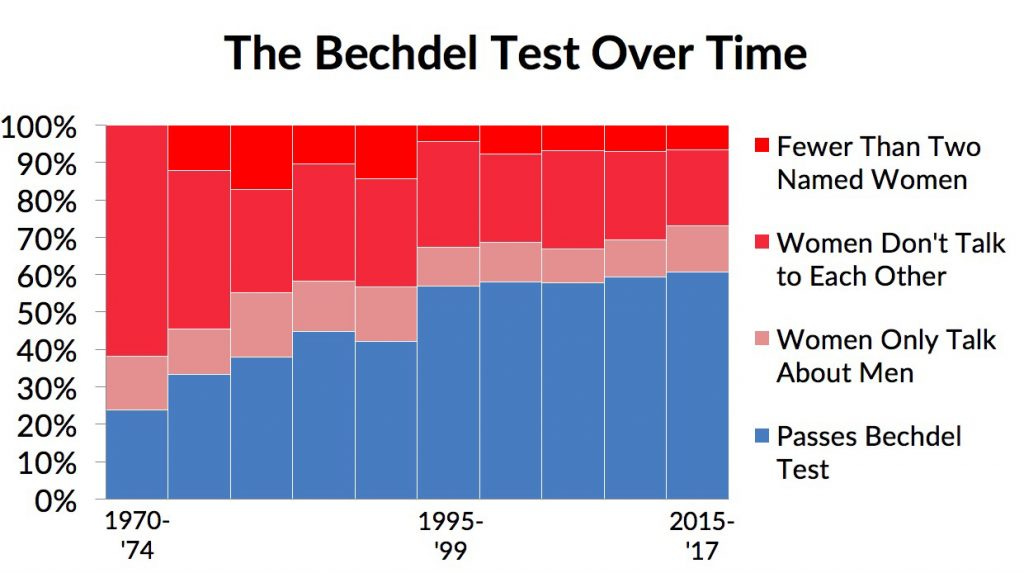
Image Source: researchblog.duke.edu
What is the Bechdel Test ?
Also known as the “Bechdel-Wallace” test, it measures the representation of women in fiction. Created by Alison Bechdel in her 1985 comic “Dykes to Watch Out For” the test was introduced under the comic strip “The Rule”. From there on it gained popularity, and today is a popular tool to call out gender inequality in pop culture.
What is the rule exactly ?
To pass the Bechdel test, a movie should satisfy the following conditions:
Have at least two female characters (preferably named)
Who talk to each other
About something other than a man
The simplicity of the rule would make you feel it should not be a difficult test to pass, right?
As per www.bechdeltest.com, which is a user generated site with the results of over 8076 movies in the database, we see that:
Only 4651 (57.6%) of movies pass all three tests,
821 (10.2%) pass two tests
1785 (22.1%) pass one test
819 (10.1%) pass no tests at all
Some of the popular movies that have failed this really simple test are:
The Lord of The Rings Trilogy
Bohemian Rhapsody
Avatar
The Social Network
The Avengers
Imitation Game
Toy Story 1 & 2
Gully Boy
Article 15
A Marriage Story
Andhadhun
Green Book
Harry Potter and the Deathly Hallows
Slumdog Millionaire
La La Land
Moonlight
Finding Nemo
The problem with the test
While the simplicity of the test is what makes it so popular, it should also be an indicator of the quality of the movie, or of the portrayal of (accurate) feminism in the movie. Movies like Gravity, A Star is Born, Arrival, Breakfast at Tiffany’s actually fail the test but can’t be deemed as bad or anti-feminist movies.
Something as nuanced as feminism cannot be captured by a simple test like Bechdel.
So why use the test ?
The fact that a lot of successful movies actually fail this simple test makes it a good catalyst for discussion even with its shortcomings. Even in today’s world, a woman’s story lacks depth, and their aspirations and range of problems displayed on screen are limited. It opens the discussion that simply having women in movies or shows isn’t enough. These characters also need to have layers and substance, just like in real life.
Similar Tests
The Duvernay Test-Measures the representation of race
The Waithe Test- Measures the representation of black women
The Villalobos Test- Measures the representation of Latin women
The Vito Russo Test- Measures the representation of the LGBTQ community
More complex and structured analyses are required to solve the problem of representation. Being aware of such tests and their results helps us understand how deep the problem runs and how oblivious we are to it even today.
The quote from Virginia Woolf that inspired the test and some food for thought:
“All these relationships between women, I thought, rapidly recalling the splendid gallery of fictitious women, are too simple. […] And I tried to remember any case in the course of my reading where two women are represented as friends. […] They are now and then mothers and daughters. But almost without exception they are shown in their relation to men”.



